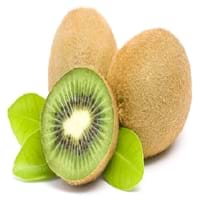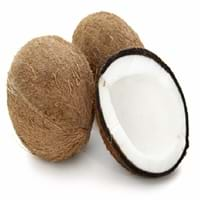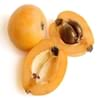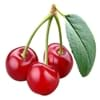Health Benefits
Asthma treatment, Heart care, Prevents constipation, Treatment of skin Diseases
Acidity treatment, Acts as natural antibiotic, Anti-oxidant properties, Aphonia treatment
General Benefits
Boosts immune system, Controls blood pressure, Eye care, Helps in weight loss
Anti-inflammatory properties, Body hydration, Boosts immune system, Controls blood sugar levels, Digestive aid, Fights against infections, Flu treatment, Healing of wounds, Helps in weight loss, Maintains healthy cholesterol level
Skin Benefits
Brightens and lightens complexion, Heals sunburn, Reduces wrinkles, Skin rejuvenation, Treatment of acne, Treatment of dark spots, Treatment of skin diseases
Anti-aging benefits, Heals sunburn, Hydrates skin, Reduces wrinkles, Skin rejuvenation, Skin revitalization, Treatment of skin diseases
Hair Benefits
Prevents hair loss, Promotes longer and healthier hair, Treatment of dandruff
Promotes longer and healthier hair, Regulates hair growth, Rejuvenates scalp, Shiny hair, Treatment of dandruff
Allergy Symptoms
Abdominal pains, Anaphylaxis, Breathing difficulty, Itching in tongue and other parts of mouth, Itching sensation in throat, Swelling of mouth, tongue or lips, Vomiting
Abdominal pains, Breathing difficulty, Itching in tongue and other parts of mouth, Nasal congestion, Nausea, Runny nose, Vomiting
Side Effects
Allergic reaction, Diarrhoea, Skin rash, Possibly unsafe during pregnancy
Allergic reaction, Indigestion, Weight gain
Best Time to Eat
Any time except an hour after meal, Don't consume at night and before bed
Along with meal, Best if taken as a breakfast (or empty stomach), As a snack in the late afternoon, Morning time (before lunch)
Vitamin B5 (Pantothenic Acid)
Vitamin C (Ascorbic Acid)
Vitamin K (Phyllochinone)
Phytosterol
Not Available
Calories in Fresh Fruit with Peel
Not Available
Calories in Fresh Fruit without Peel
Not Available
Calories in Frozen Form
Not Available
Not Available
Type
Tropical
Tree fruit, Tropical
Season
Spring, Summer, Winter
All seasons
Varieties
Zhong Hua, Jing Li, Ruan Zao, Mao Hua and Huang Yan
Tall Varieties- West Coast Tall, Laccadiv Micro, Andaman Ordinary, Fiji, Kappadam, San Ramon, Philippines, Spicate, and Pratap. Dwarf Varieties- Chowghat Orange Dwarf (COD) and Chowghat Green Dwarf (CGD)
Color
Brown, Green
Brown, Green
Taste
Sour-Sweet, Tangy
Juicy, Sweetish
Origin
China
America, India
Soil Type
Well-drained
Clay, Sand
Climatic Conditions
Cold, Sunny
Hot, Humid
Facts about
- The name Kiwi is due to the resemblance with 'Kiwi' bird.
- Animals like monkeys and deer also consume Kiwifruit.
- Originated in china, this fruit is also called as 'Chinese gooseberry.'
- Burning coconut's husk helps repel mosquitoes.
- Surveys say that falling coconut kills hundreds every year.
- Coconut water is used as a substitute Blood Plasma & is called "father of modern tissue culture science".
Top Producer
Italy
Indonesia
Other Countries
Chile, France, Greece, Iran, Japan, New Zealand, Portugal, Turkey, United States of America
Brazil, India, Philippines, Sri Lanka
Top Importer
United States of America
United States of America
Top Exporter
New Zealand
Philippines
Botanical Name
Actinidia deliciosa
Cocos nucifera
Synonym
Not Available
Not Available
Subkingdom
Tracheobionta
Tracheobionta
Division
Magnoliophyta
Magnoliophyta
Class
Magnoliopsida
Liliopsida
Subclass
Dillenhidae
Arecidae
Family
Actinidiaceae
Arecaceae
Species
A. deliciosa
C. nucifera
Generic Group
Kiwi
Arecaceae
Difference Between Green Kiwi and Coconut
We might think that Green Kiwi and Coconut are similar with respect to nutritional value and health benefits. But the nutrient content of both fruits is different. Green Kiwi and Coconut Facts such as their taste, shape, color, and size are also distinct. The difference between Green Kiwi and Coconut is explained here.
The amount of calories in 100 gm of fresh Green Kiwi and Coconut with peel is 61.00 kcal and Not Available and the amount of calories without peel is Not Available and 354.00 kcal respectively. Thus, Green Kiwi and Coconut belong to and category.These fruits might or might not differ with respect to their scientific classification. The order of Green Kiwi and Coconut is Ericales and Arecales respectively. Green Kiwi belongs to Actinidiaceae family and Coconut belongs to Arecaceae family. Green Kiwi belongs to Actinidia genus of A. deliciosa species and Coconut belongs to Cocos genus of C. nucifera species. Beings plants, both fruits belong to Plantae Kingdom.









